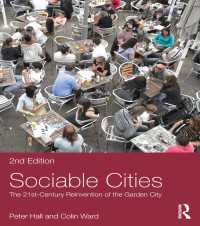Description
Accident & Emergency: Theory into Practice is the comprehensive textbook for emergency nurses, covering the full range of emergency care issues, including trauma management and trauma care, the lifespan, psychological issues, physiology for practice, practice and professional issues. This book is about more than what a nurse should do; it is about why it should be done, leading to sustainable and safer practice.The third edition of this ever-popular text expands its horizons to include contributions from emergency care professionals in New Zealand, Australia and the Republic of Ireland, as well as the United Kingdom.- Applied anatomy and physiology and how it changes in injury and ill health- Treatment and management of a wide range of emergency conditions- Includes emergency care across the life continuum, trauma management, psychological dimensions and practice and professional issues.- 'Transportation of the critically ill patient' chapter outlines the nursing and operational considerations related to transportation of the acutely ill person.- 'Creating patient flow' chapter overviews the concepts behind patient flow across the wider health system and introduces the key concept of staff and patient time. It explores some of the techniques used in manufacturing and service industries and its application to health system, illustrating how to reduce the waste of patient and staff time.- 'Managing issues of culture and power in ED' chapter demonstrates that cultural awareness is about much more than recognising the different religious needs of patients and their families; it's also about recognising culture, diversity, stereotyping and expressions of power.- Updated to reflect the latest practice and guidelines in this fast-changing field of practice.
Table of Contents
Part 1 Trauma management1. Pre-hospital care2. Trauma life support3. Major incidents4. Transportation of the acutely ill patientPart 2 Trauma care5. Head injuries6. Skeletal injuries7. Spinal injuries8. Thoracic injuries9. Abdominal injuries10. Maxillofacial injuries11. BurnsPart 3 Psychological dimensions12. Aggression13. Stress and stress management14. Care of the bereaved15. Mental health emergenciesPart 4 Life continuum16. Infants17. Pre-school child18. Age 5 to puberty19. Adolescence20. Young adults21. Middle years22. Older peoplePart 5 Physiology for ED practice23. Physiology for ED practice24. Wound care25. Pain and pain management26. Local and regional anaesthesiaPart 6 Emergency care27. Cardiac emergencies28. Medical emergencies29. Surgical emergencies30. Gynaecological and obstetric emergencies31. Ophthalmic emergencies32. Ear, nose and throat emergenciesPart 7 Practice issues in emergency care33. People with learning disabilities34. Health promotion35. TriagePart 8 Professional issues in ED36. Leadership37. Clinical decision-making38. Ethical issues39. Law40. Health & safety41. Managing issues of culture and power in ED42. Improving patient flowAppendix: Normal valuesIndex







